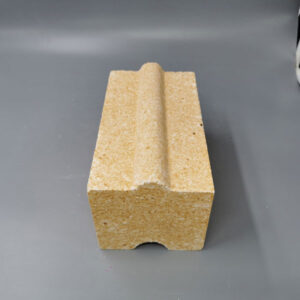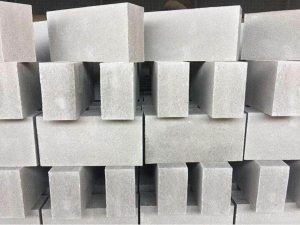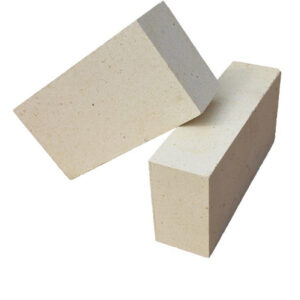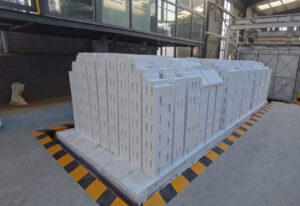Al2O3-SiO2 has good creep resistance, which is determined by the microstructure of the material (i.e. the relative content of crystalline and glass phases in the material, the distribution state between crystalline phases, and between crystalline and glass phases).
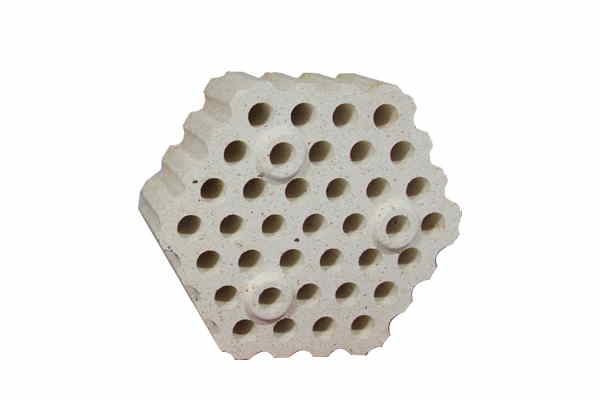
Low-Creep Clay Bricks
Low-creep clay bricks are now one of the commonly used refractory bricks in blast furnaces and hot blast furnaces, and as the wind temperature increases, the creep resistance of clay bricks increases. Low creep clay bricks are made of coke clinker with dense structure, high initial, and few impurities as the main raw material, adding part of synthetic mullite and trilithon raw materials to configure into clay, which will be formed under high pressure, dried, and fired at high temperature.
Product characteristics
(1) High-temperature volume stability.
(2) High refractory temperature.
(3) High-temperature creep rate is small.
(4) High strength and wear resistance.
(5) Chemical erosion resistance.
(6) Good thermal shock resistance.
Product use
Low-creep clay brick is suitable for blast furnaces, hot air lining, ladle lining and steel casting, iron furnaces, heating furnaces, glass kilns, boilers and coke ovens, and other thermal engineering equipment.
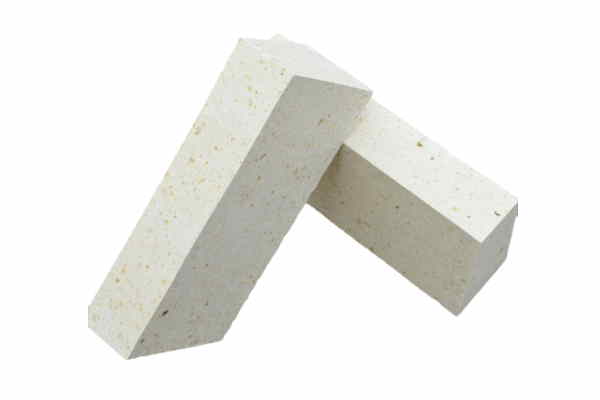
Low Creep High Alumina Brick
Low creep high alumina brick is made by adding other beneficial auxiliary minerals to the production process of ordinary high alumina brick to improve the creep resistance. With the development of ironmaking blast furnaces with large volumes, high wind temperature, and long life, the proportion of low creep high alumina brick for hot blast furnaces is getting higher and higher.
Methods to improve the creep resistance
Different creep temperatures adding different beneficial minerals can improve the creep resistance of high alumina brick.
When the creep temperature at 1550 ℃, 1500 ℃ additive is quartz, three stone minerals. Three stone refers to blueschist, rhodochrosite, and silica.
When the creep temperature is at 1450 ℃, 1400 ℃, and 1350 ℃, the additives are trilithic minerals, corundum, and active alumina.
When the creep temperature is 1300℃, 1270℃, and 1250℃, the additions are trilithic minerals.
The above trilithic minerals, corundum, and activated alumina are added in the form of a matrix. Because the mullitization of the matrix can improve the mullite content of high alumina brick, reduce the glass phase content, and improve the high-temperature resistance, high-temperature volume stability performance, and thermal shock resistance.
Low Creep Electric Furnace Roof High Alumina Brick
Low creep furnace top high alumina brick is made of high alumina bauxite clinker as the main raw material, adding creep resistance of trilithic raw materials to configure into clay, through high-pressure molding, and high-temperature firing.
Low creep furnace top high alumina brick packaging is divided into two kinds: ordinary wooden pallet packaging, wrapped with plastic film on the outside, moisture-proof and rain-proof, can be sent all over the country. Fumigation-free pallet packaging, suitable for export to overseas markets.
Low-creep electric furnace is roof high alumina brick and is mainly used for masonry blast furnaces, hot blast furnaces, electric furnace roofs, blast furnaces, reflection furnaces, and other furnace roof lining refractory bricks.
Low-Creep Red Pillar Refractory Bricks
Low creep red pillar refractory brick is made of mullite and red pillar as the main raw materials, formed by high pressure and high-temperature firing. It has the characteristics of low impurity content, low porosity, small bulk density, high-temperature strength, stability under high-temperature conditions, good thermal shock resistance, and a small creep rate. At the same time, it is suitable for the configuration of large and medium-sized blast furnaces and hot air furnaces.
Refractory brick is an important part of industrial furnaces, used in various industries such as steel, cement, glass, and petrochemical industry. The use of fire bricks can improve the efficiency of industrial processes and reduce energy costs. PER Refractories specializes in manufacturing and supplying these high-temperature-resistant bricks.

